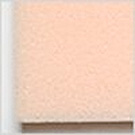Our Business
Chemical Products
Everlite®
Everlite is available in two types of polyurethane foam: polyether-based or polyester-based. The difference is whether the polyol, the main raw material, is ether (single-bonded) or ester (double bonded).
Although they are similar soft polyurethane foams, there are significant differences between them in terms of their properties, and each should be used in the right application.

| General ether form. | General ester forms. | |||
|---|---|---|---|---|
| General physical properties | Density(kg/cm3) | 16~50 | 26~100 | |
| 25% hardness(N) | 20~500 | 100~300 | ||
| Growth (%) | 80~300 | 150~500 | ||
| Tensile strength (KPa) | 50~200 | 50~300 | ||
| Cracking strength(N/cm2) | 3~12 | 7~17 | ||
| Compression residual strain(%) | 2~10 | 3~7 | ||
| Cyclic compression residual strain(%) | 1~6 | 3~7 | ||
| Hysteresis loss(%) | 25~40 | 35~50 | ||
| Thermal conductivity(Kcal/mh℃) | Circa 0.030 (lighter density is better) | Circa 0.030 (lighter density is better) | ||
| Electrical resistance(Ω/cm) | 1012~14 | 1012~14 | ||
| Durability | heat-resisting property(℃) | highest | Circa 90℃ | Circa 100℃ |
| regular | Circa 70℃ | Circa 70~80℃ | ||
| Water and moisture resistance | Great stability and resistance to deterioration. | Tends to deteriorate particularly quickly at high temperatures and humidity, and in alkaline and acidic conditions. | ||
| Oil resistance | Swelling and reduced strength. | Less swelling and less strength loss. | ||
| Recovery occurs when oils are removed | ||||
| Weather resistance | Good for indoor use, but gradually deteriorates outdoors. | Slightly better than ether-based | ||
| Soundproofing | Good | Good | ||
| Thermoformability | Good | Good. Generally superior to ether-based systems. |
||
| Flame laminability (thermal bonding) | Material for frame lamination is good | Good | ||
| Cell | Uniformity | Normally | Good. Generally better than ether-based systems. |
|
| Size | Generally, it is difficult to vary the size of the cell. | Various cell sizes are easy to create. | ||
| Colourability (when foaming) | Easy | Easy. Vivid colours. | ||
| Punchability | Good | In some cases, the edges stick together when punching. | ||
| Products with improved punching properties are good. | ||||
| Abrasion resistance | Good | Good. Generally superior to ether-based systems. |
||
| Examples of compatible applications | Cushioning, clothing, packaging and sound-absorbing materials | Cleaner materials, speaker edge materials, sound absorbers, thermal insulation and other industrial materials. | ||
